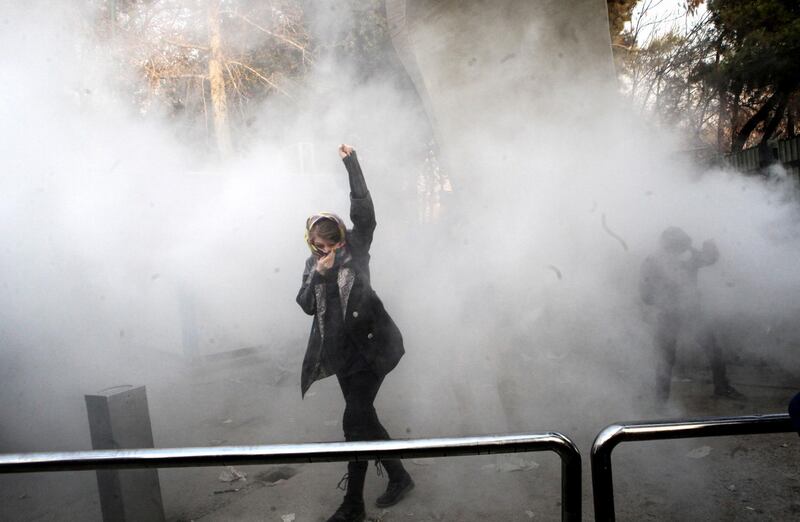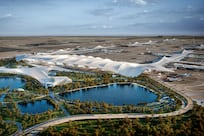After nearly four days of violent protest all over Iran with not a word from President Hassan Rouhani, he finally broke his silence. It was not via a live television address as had been planned, but rather through a published account of his statements during the meeting of his cabinet. Mr Rouhani acknowledged the grievances of the protesters, supported their right to protest, promised to provide outlets for free expression and pointed the finger of blame at domestic opponents as well as foreign enemies. Meanwhile, demonstrations spread like wildfire through 24 cities across Iran.
All that notwithstanding, the 2017 uprising forms the latest entry in the register of political development among Iranian citizens in the past 39 years. Whether at the ballot box, in celebration or in street protests, Iranians have displayed their vibrancy and boldness amply through recent history, and certainly since the 1978 revolution.
A map of the areas in Iran where protests have taken place in the past four days.
The last time Iran produced a revolt of such magnitude was in 2009 with the Green Movement. While the 2009 protests were orchestrated principally in Tehran and a few major provinces, the current revolt extends all the way from the north to the south and from the east to the west of the country.
The political leadership of the Green Movement was comprised of prominent figures from within the bosom of the state. Their red line was the regime’s survival, so they coalesced around a single issue: protesting against fraudulent elections. But the 2017 uprising so far does not seem to have a nuclear political leadership, which means the security forces cannot nip it in the bud, as they did in 2009 with the swift arrest of the Green leaders and managers.
______________
Iran protests:
Ten killed in nationwide protests: Iranian state TV
Protesters 'shot dead' during third day of demonstrations in Iran
Iran unrest is 'start of a big movement': Nobel Peace Prize-winner Ebadi
Editorial: The Iranian people’s patience runs out
______________
The changing of Iran's demographic profile is another significant feature of this political development. In 2009 60 per cent of Iran’s population was below the age of 30. Today more than over 55 per cent of the population is between 25 and 64 years of age.
While Green Movement activists struggled to attract blue-collar workers to join their cause, in 2017 the majority of the protesters are of working age and pensioners. The rising inequality they perceive between themselves and the elite has deepened their disillusionment, so their slogans point to fissures extending far beyond a single issue, aiming for the complete overthrow of the theocracy.
Here's a taste:
“What a mistake we made by taking part in the revolution”
“Reformists, Hardliners, The Game is Now Over!”
وای وااای واااای 😍😍😍چقد خوبه این شعار...عالیه...عااالی
— امـیـنـیـمـا (@ammmiiiiiinnnnn) December 30, 2017
اصلاحطلب اصولگرا....دیگه تمومه ماجرا#تظاهرات_سراسرى pic.twitter.com/ukC7D4M3OM
“Let go of Syria; Think About Us!”
“Neither for Gaza, nor for Lebanon, I Give My Life Just For Iran!”
Indeed the slogans are an amalgamation of grievances continuously expressed since 2013, in daily protests and strikes. The social insurance system of the country is broken. The country’s banking system is faring no better. Major financial institutions supported by the government have gone bankrupt, costing investors and ordinary account holders their life savings. Endemic corruption, mismanagement and lack of good governance, in addition to the regime’s costly foreign adventurism, have erased all trust in the system's ability to resolve Iran’s plethora of problems.
Whether the security services will be able to quash the unrest quickly remains to be seen, and it has already been four days. It is however doubtful that Mr Khamenei’s theocracy will be able to ease - let alone dispel - the economic, environmental and social crises engulfing Iran.
Complicating the situation further is the ever-present struggle between two mutually exclusive outlooks within the Islamic Republic and those who make the political and strategic decisions.
For one camp Iran is a vehicle for an Islamic revolution on a global scale; for the other Iran is a country in need of sustainable development.
Is Iran a cause or a country? The Islamic Republic is mired in an existential struggle from within and ordinary Iranians have had enough.






